Phylogenetic Analysis of Indian Dromedary Breeds Based on the Mitochondrial D-Loop Marker
Simple Summary
Abstract
1. Introduction
2. Materials and Methods
2.1. Sequence Dataset
2.2. Evolutionary Distance and Phylogenetic Analysis
2.3. Compositional Analysis
2.4. Correlation Analysis
2.5. Correspondence Analysis
2.6. Population Structure Analysis
2.7. Prediction of Transcription Factor Binding Sites
3. Results
3.1. Phylogenetic Relationship and Sequence Identity
3.2. Nucleotide Composition
3.3. Dinucleotide Abundance Patterns
3.4. Correlation Analysis
3.5. Correspondence Analysis
3.6. Population Diversity Estimates
3.7. Functional Assessment of D-Loop Sequence
4. Discussion
5. Conclusions
Supplementary Materials
Author Contributions
Funding
Institutional Review Board Statement
Informed Consent Statement
Data Availability Statement
Acknowledgments
Conflicts of Interest
Abbreviations
| mtDNA | Mitochondrial DNA |
| D-loop | Displacement loop |
| ATP6 | Adenosine Triphosphate Synthase subunit 6 |
| ATP8 | Adenosine Triphosphate Synthase subunit 8 |
| SNP | Single Nucleotide Polymorphism |
| SAS | Statistical Analysis System |
| ME | Minimum Evolution |
| CNI | Close-Neighbor Interchange |
| A | Adenine |
| T | Tyrosine |
| G | Guanine |
| C | Cytosine |
| nt | Nucleotides |
| SD | Standard Deviation |
| O/E | Observed/Expected |
| r | Pearson correlation coefficient |
| A-DD | Adenine Distance Distribution |
| AT% | Adenine–Thymine percentage |
References
- Saccone, C.; Attimonelli, M.; Sbisa, E. Structural elements highly preserved during the evolution of the D-loop-containing region in vertebrate mitochondrial DNA. J. Mol. Evol. 1987, 26, 205–211. [Google Scholar] [CrossRef]
- Chaitanya, K. Orgenellar Genome Analysis. In Genome and Genomics: From Archaea to Eukaryotes; Springer: Berlin/Heidelberg, Germany, 2019; pp. 89–119. [Google Scholar]
- Sodhi, M.; Sobti, R.C.; Mukesh, M. Mitochondrial DNA: A tool for elucidating molecular phylogenetics and population. In Advances in Animal Experimentation and Modeling; Elsevier: Amsterdam, The Netherlands, 2022; pp. 27–38. [Google Scholar]
- McWilliams, T.G.; Suomalainen, A. Mitochondrial DNA can be inherited from fathers, not just mothers. Nature 2019, 296–297. [Google Scholar] [CrossRef] [PubMed]
- Lee, D.Y.; Clayton, D.A. Initiation of mitochondrial DNA replication by transcription and R-loop processing. J. Biol. Chem. 1998, 273, 30614–30621. [Google Scholar] [CrossRef] [PubMed]
- Falkenberg, M.; Larsson, N.-G.; Gustafsson, C.M. Replication and transcription of human mitochondrial DNA. Annu. Rev. Biochem. 2024, 93, 47–77. [Google Scholar] [CrossRef]
- Jain, K.; Panigrahi, M.; Nayak, S.S.; Rajawat, D.; Sharma, A.; Sahoo, S.P.; Bhushan, B.; Dutt, T. The evolution of contemporary livestock species: Insights from mitochondrial genome. Gene 2024, 927, 148728. [Google Scholar] [CrossRef] [PubMed]
- Hussain, T.; Pichler, R.; Babar, M.E.; Khan, W.A.; Ullah, Z.; Shehzad, S.; Periasamy, K. Mitochondrial DNA D-Loop diversity and evolutionary relationship of wild Punjab Urial sheep (Ovis vignei punjabiensis) with closely related taxa. Small Rumin. Res. 2017, 148, 22–32. [Google Scholar] [CrossRef]
- Parsad, R.; Ahlawat, S.; Bagiyal, M.; Arora, R.; Gera, R.; Chhabra, P.; Sharma, U.; Singh, A. Climate resilience in goats: A comprehensive review of the genetic basis for adaptation to varied climatic conditions. Mamm. Genome 2025, 36, 151–161. [Google Scholar] [CrossRef]
- Bahbahani, H.; Al-Zoubi, S.; Ali, F.; Afana, A.; Dashti, M.; Al-Ateeqi, A.; Wragg, D.; Al-Bustan, S.; Almathen, F. Signatures of purifying selection and site-specific positive selection on the mitochondrial DNA of dromedary camels (Camelus dromedarius). Mitochondrion 2023, 69, 36–42. [Google Scholar] [CrossRef]
- Mohandesan, E.; Fitak, R.R.; Corander, J.; Yadamsuren, A.; Chuluunbat, B.; Abdelhadi, O.; Raziq, A.; Nagy, P.; Stalder, G.; Walzer, C. Mitogenome sequencing in the genus Camelus reveals evidence for purifying selection and long-term divergence between wild and domestic Bactrian camels. Sci. Rep. 2017, 7, 9970. [Google Scholar] [CrossRef]
- Podbielska, A.; Piorkowska, K. Examination of D-loop region and DBY gene as tools for identifying hybridisation in alpacas (Vicugna pacos) based on Polish populations. Small Rumin. Res. 2022, 211, 106690. [Google Scholar] [CrossRef]
- Satyanarayana, D.S.; Ahlawat, S.; Sharma, R.; Arora, R.; Sharma, A.; Tantia, M.; Vijh, R. Genetic differentiation of Indian dromedary and Bactrian camel populations based on mitochondrial ATP8 and ATP6 genes. Anim. Biotechnol. 2023, 34, 756–760. [Google Scholar] [CrossRef]
- Alaqeely, R.; Alhajeri, B.H.; Almathen, F.; Alhaddad, H. Mitochondrial sequence variation, haplotype diversity, and relationships among dromedary camel-types. Front. Genet. 2021, 12, 723964. [Google Scholar] [CrossRef]
- Sbisà, E.; Tanzariello, F.; Reyes, A.; Pesole, G.; Saccone, C. Mammalian mitochondrial D-loop region structural analysis: Identification of new conserved sequences and their functional and evolutionary implications. Gene 1997, 205, 125–140. [Google Scholar] [CrossRef]
- Manee, M.M.; Alshehri, M.A.; Binghadir, S.A.; Aldhafer, S.H.; Alswailem, R.M.; Algarni, A.T.; Al-Shomrani, B.M.; Al-Fageeh, M.B. Comparative analysis of camelid mitochondrial genomes. J. Genet. 2019, 98, 88. [Google Scholar] [CrossRef]
- Burger, P.A.; Ciani, E.; Faye, B. Old World camels in a modern world–a balancing act between conservation and genetic improvement. Anim. Genet. 2019, 50, 598–612. [Google Scholar] [CrossRef] [PubMed]
- Satyanarayana, D.S.; Ahlawat, S.; Sharma, R.; Arora, R.; Sharma, A.; Tantia, M.; Vijh, R. Mitochondrial DNA diversity divulges high levels of haplotype diversity and lack of genetic structure in the Indian camels. Gene 2022, 820, 146279. [Google Scholar] [CrossRef] [PubMed]
- Lacy, R.C. Importance of genetic variation to the viability of mammalian populations. J. Mammal. 1997, 78, 320–335. [Google Scholar] [CrossRef]
- National Bureau of Animal Genetic Resources, I.C.A.R. Camel, Donkey & Yak Breeds of India. Available online: https://nbagr.res.in/camel-donkey-yak?utm_source=chatgpt.com (accessed on 1 July 2025).
- Kumar, S.; Stecher, G.; Suleski, M.; Sanderford, M.; Sharma, S.; Tamura, K. MEGA12: Molecular Evolutionary Genetic Analysis version 12 for adaptive and green computing. Mol. Biol. Evol. 2024, 41, msae263. [Google Scholar] [CrossRef] [PubMed]
- Drummond, A.J.; Rambaut, A. BEAST: Bayesian evolutionary analysis by sampling trees. BMC Evol. Biol. 2007, 7, 214. [Google Scholar] [CrossRef]
- Mathur, M.; Patiyal, S.; Dhall, A.; Jain, S.; Tomer, R.; Arora, A.; Raghava, G.P. Nfeature: A platform for computing features of nucleotide sequences. bioRxiv 2021. [Google Scholar] [CrossRef]
- Hammer, Ø.; Harper, D.A. Past: Paleontological statistics software package for educaton and data anlysis. Palaeontol. Electron. 2001, 4, 1. [Google Scholar]
- Rozas, J.; Ferrer-Mata, A.; Sánchez-DelBarrio, J.C.; Guirao-Rico, S.; Librado, P.; Ramos-Onsins, S.E.; Sánchez-Gracia, A. DnaSP 6: DNA sequence polymorphism analysis of large data sets. Mol. Biol. Evol. 2017, 34, 3299–3302. [Google Scholar] [CrossRef]
- Leigh, J.W.; Bryant, D.; Nakagawa, S. POPART: Full-feature software for haplotype network construction. Methods Ecol. Evol. 2015, 6, 1110–1116. [Google Scholar] [CrossRef]
- Excoffier, L.; Lischer, H.E. Arlequin suite ver 3.5: A new series of programs to perform population genetics analyses under Linux and Windows. Mol. Ecol. Resour. 2010, 10, 564–567. [Google Scholar] [CrossRef] [PubMed]
- Fu, Y.-X. Statistical tests of neutrality of mutations against population growth, hitchhiking and background selection. Genetics 1997, 147, 915–925. [Google Scholar] [CrossRef]
- Tajima, F. Statistical method for testing the neutral mutation hypothesis by DNA polymorphism. Genetics 1989, 123, 585–595. [Google Scholar] [CrossRef]
- Hedayat-Evrigh, N.; Khalkhali-Evrigh, R.; Vahedi, V.; Pourasad, K.; Sharifi, R.S. Genetic diversity and population structure of old world camelids (Camelus dromedaries and Camelus bactrianus) in Iran using mitochondrial DNA. Kafkas Üniversitesi Vet. Fakültesi Derg. 2018, 24. [Google Scholar] [CrossRef]
- Saluz, H.P.; Wiebauer, K.; Wallace, A. Studying DNA modifications and DNA-protein interactions in vivo: A window onto the native genome. Trends Genet. 1991, 7, 207–211. [Google Scholar] [CrossRef] [PubMed]
- Pramod, R.K.; Velayutham, D.; Sajesh, P.K.; Beena, P.S.; Zachariah, A.; Zachariah, A.; Chandramohan, B.; Sujith, S.S.; Ganapathi, P.; Kumar, B.D.; et al. Complete mitogenome reveals genetic divergence and phylogenetic relationships among Indian cattle (Bos indicus) breeds. Anim. Biotechnol. 2019, 30, 219–232. [Google Scholar] [CrossRef] [PubMed]
- Faye, B. How many large camelids in the world? A synthetic analysis of the world camel demographic changes. Pastoralism 2020, 10, 25. [Google Scholar] [CrossRef]
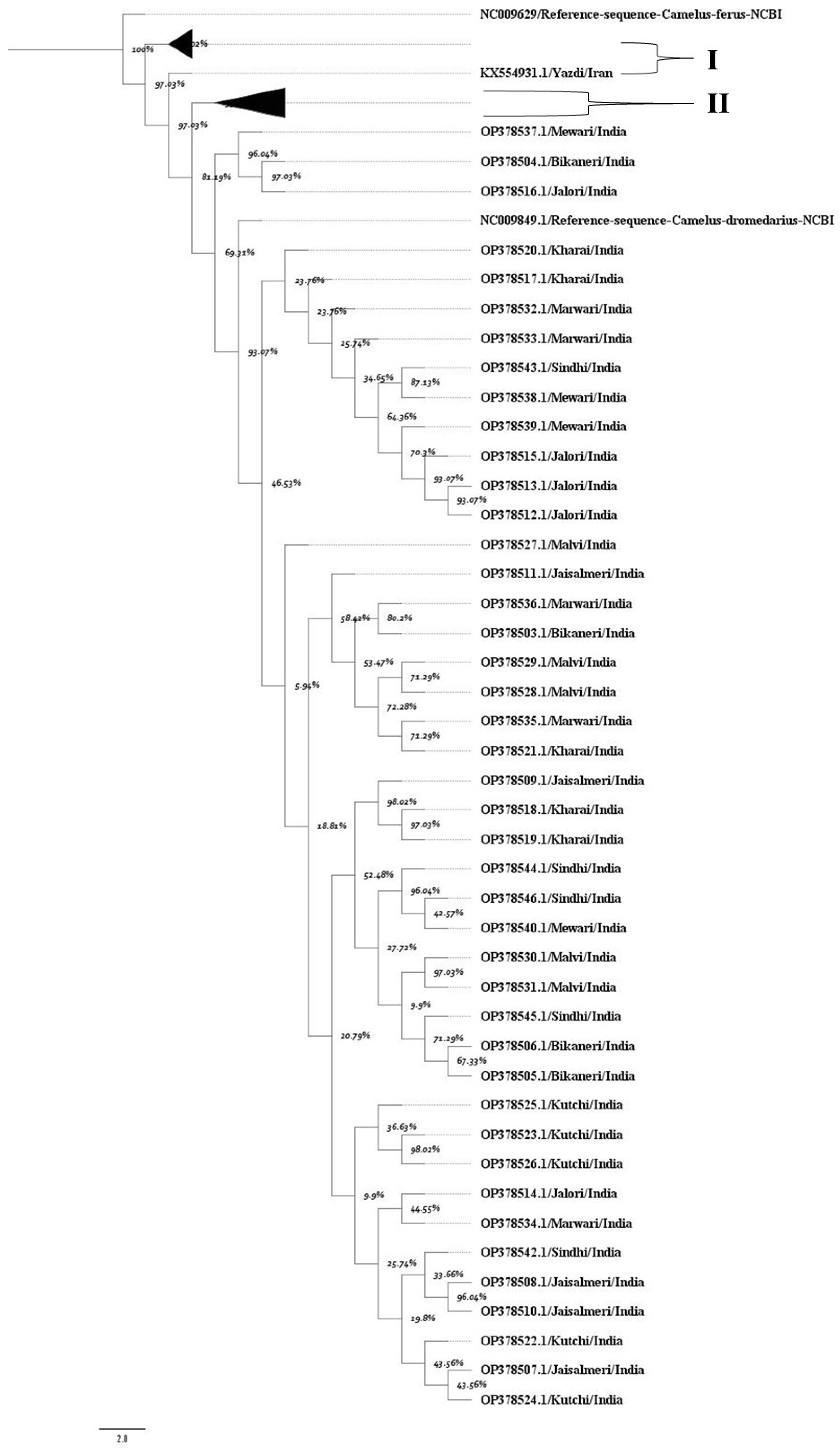
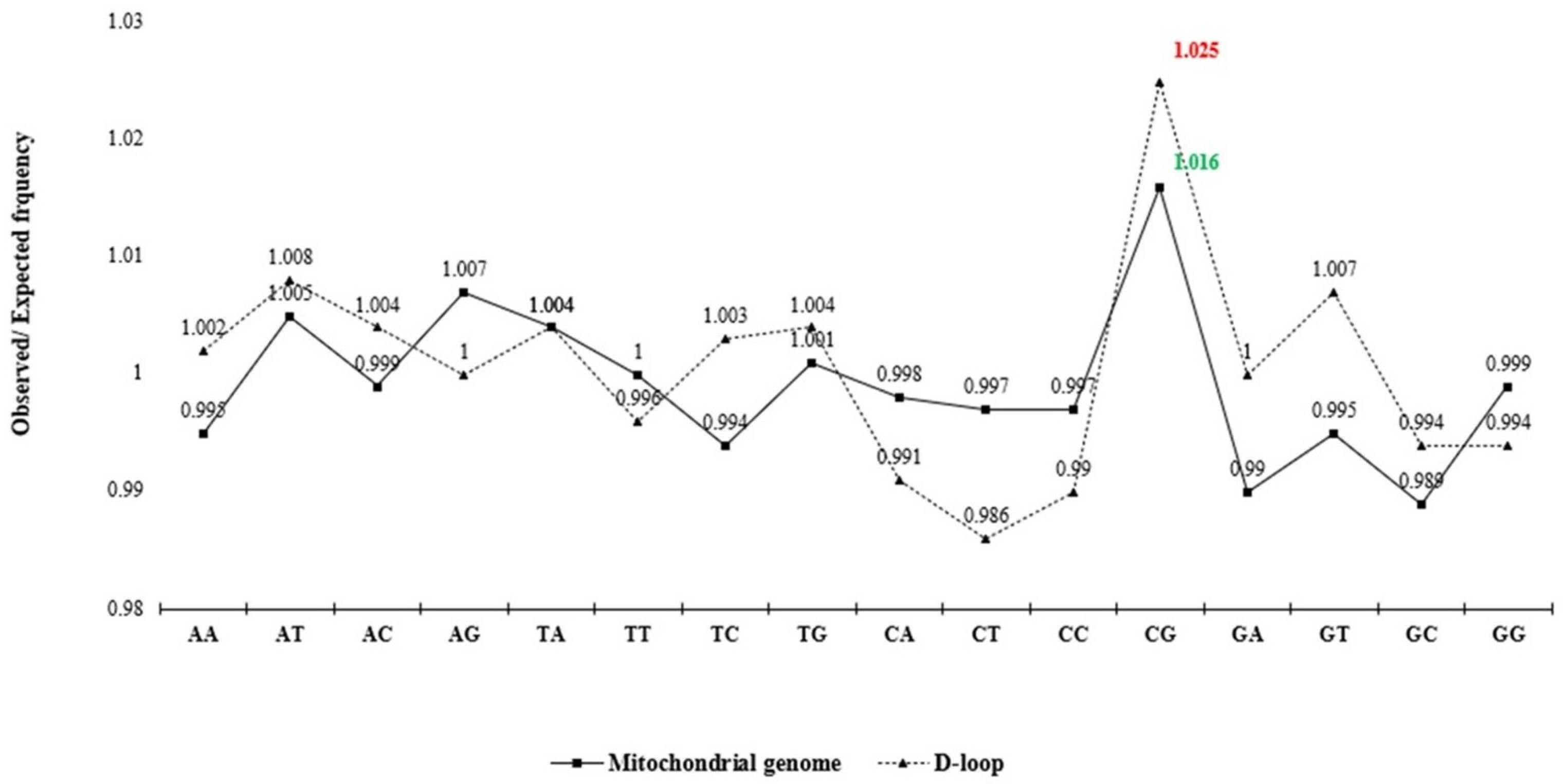
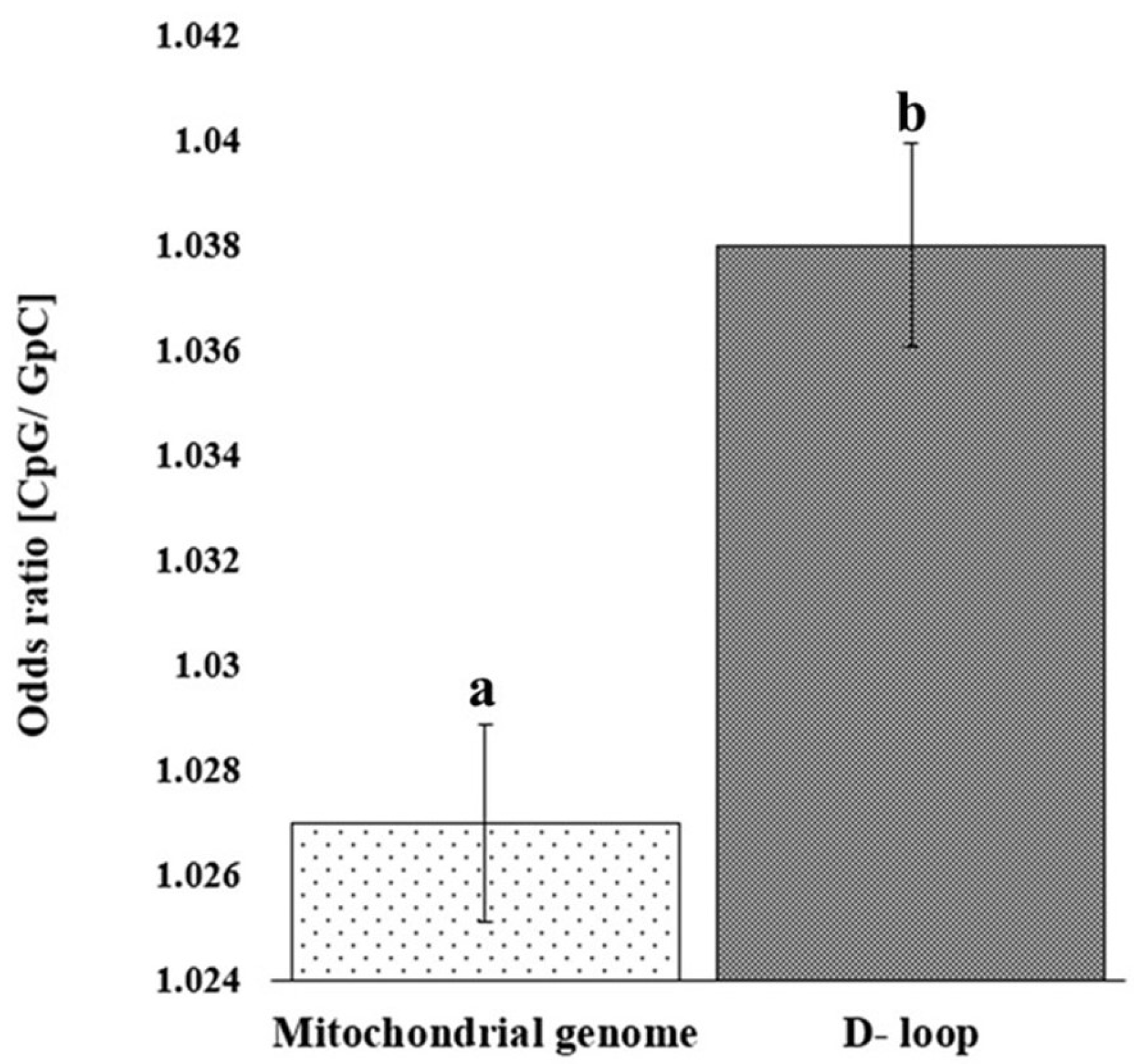
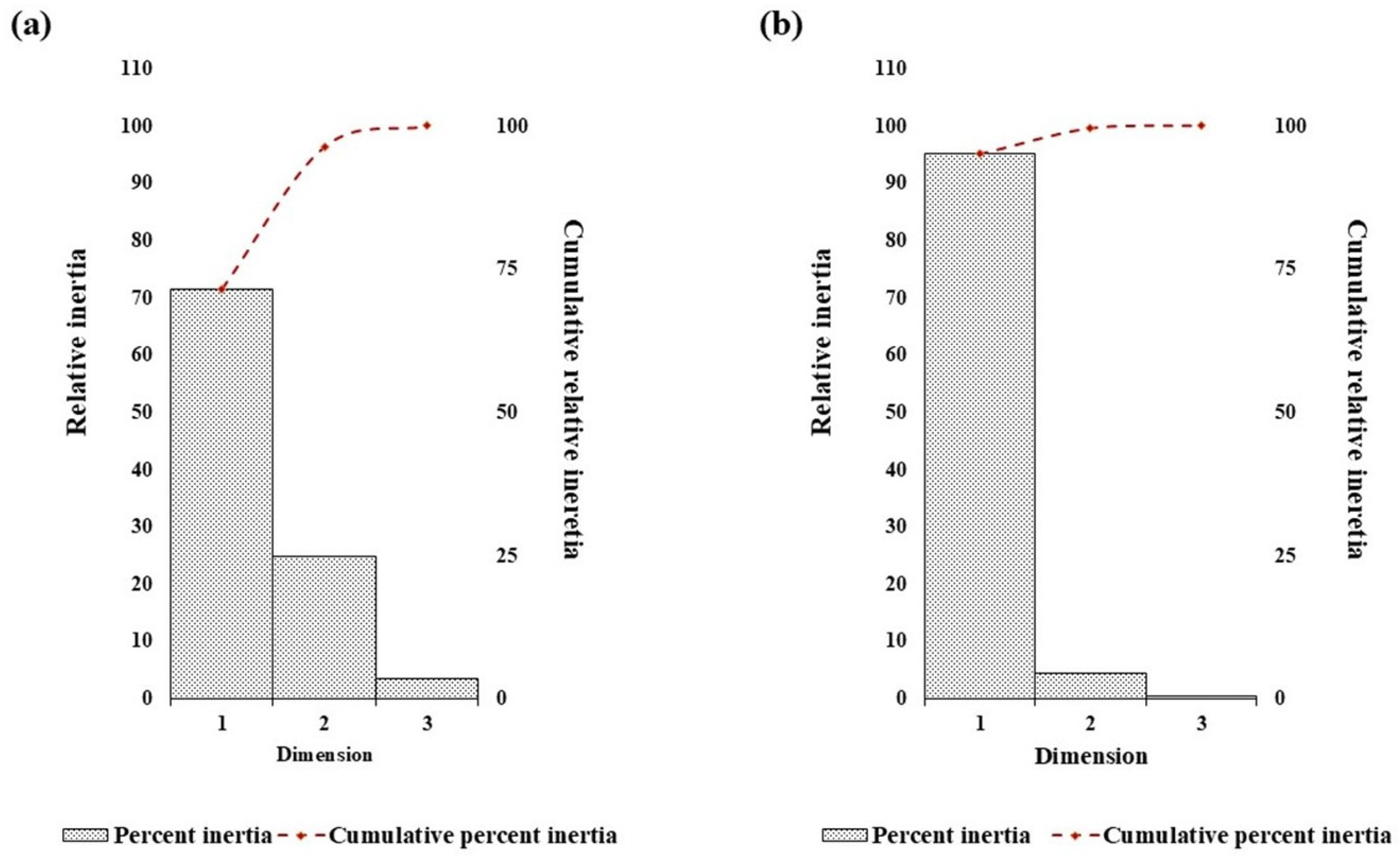
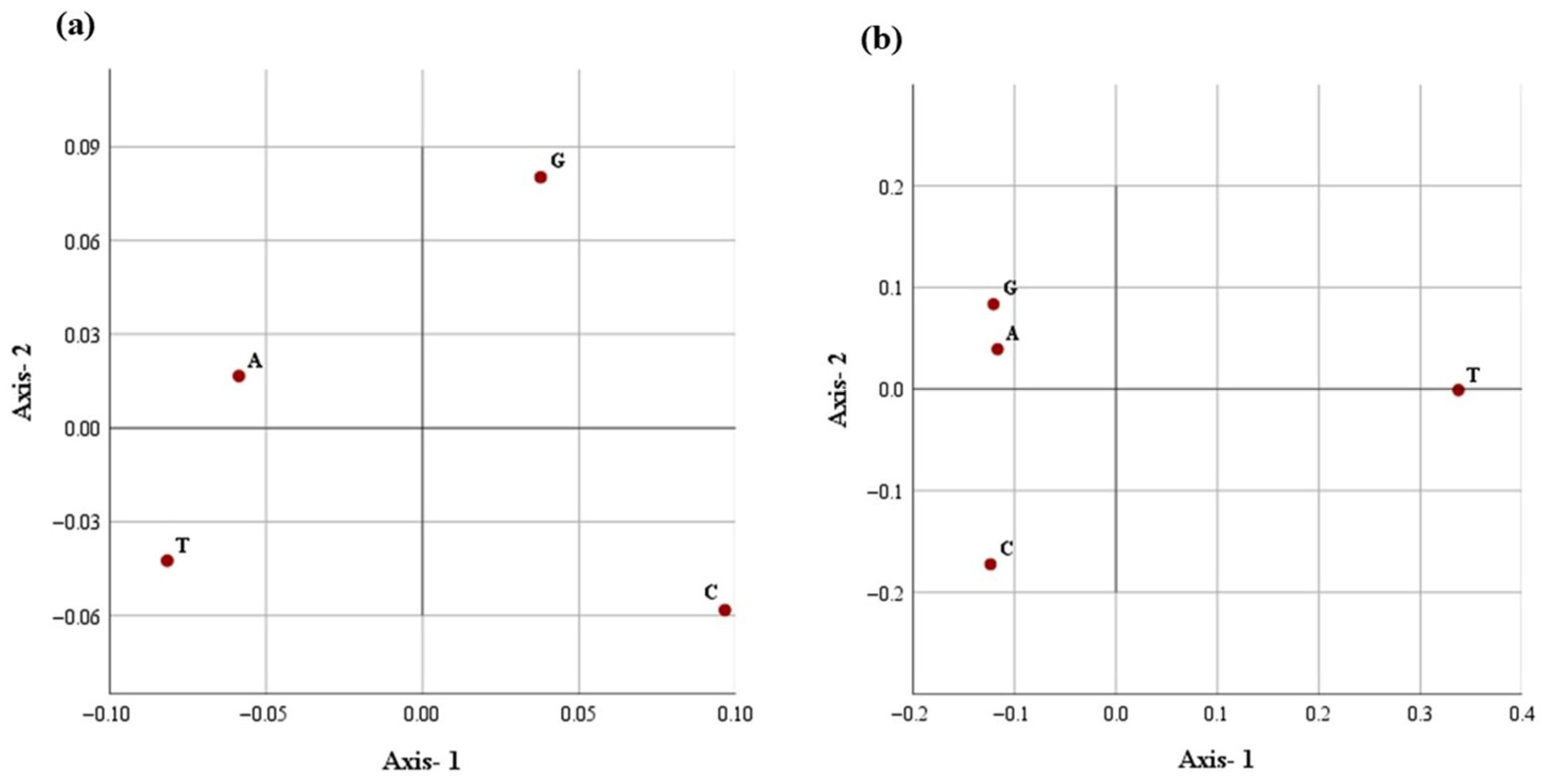
| Camel Breed | Bikaneri | Jaisalmeri | Jalori | Kharai | Kutchi | Malvi | Marwari | Mewari |
|---|---|---|---|---|---|---|---|---|
| Intra-breed | 99.6 ± 0.44 | 99.68 ± 0.18 | 99.61 ± 0.38 | 99.88 ± 0.1 | 99.76 ± 0.17 | 99.32 ± 0.58 | 99.85 ± 0.11 | 99.9 ± 0.11 |
| Jaisalmeri | 99.66 ± 0.35 | |||||||
| Jalori | 99.69 ± 0.38 | 99.67 ± 0.32 | ||||||
| Kharai | 99.7 ± 0.34 | 99.77 ± 0.14 | 99.7 ± 0.3 | |||||
| Kutchi | 99.67 ± 0.36 | 99.74 ± 0.19 | 99.7 ± 0.34 | 99.76 ± 0.14 | ||||
| Malvi | 99.5 ± 0.53 | 99.52 ± 0.46 | 99.49 ± 0.51 | 99.55 ± 0.44 | 99.53 ± 0.46 | |||
| Marwari | 99.73 ± 0.35 | 99.78 ± 0.17 | 99.75 ± 0.32 | 99.82 ± 0.11 | 99.82 ± 0.15 | 99.6 ± 0.43 | ||
| Mewari | 99.76 ± 0.36 | 99.81 ± 0.17 | 99.78 ± 0.32 | 99.85 ± 0.11 | 99.85 ± 0.14 | 99.62 ± 0.46 | 99.9 ± 0.11 | |
| Sindhi | 99.77 ± 0.35 | 99.8 ± 0.16 | 99.77 ± 0.32 | 99.85 ± 0.11 | 99.83 ± 0.14 | 99.62 ± 0.45 | 99.89 ± 0.11 | 99.92 ± 0.11 |
| Breed | D-loop | Mitochondrial Genome | ||||||||||||
|---|---|---|---|---|---|---|---|---|---|---|---|---|---|---|
| Length (nt) | % A | % T | % C | % G | % A + T | % G + C | Length (nt) | %A | %C | %T | %G | %A + T | %G + C | |
| Bikaneri | 1213 | 29.72 ± 0.08 | 23.62 ± 0.11 | 29.33 ± 0.1 | 17.33 ± 0.08 | 53.34 ± 0.07 | 46.66 ± 0.07 | 16,643 | 30.83 ± 0.03 | 26.57 ± 0.02 | 27.1 ± 0.02 | 15.49 ± 0.03 | 57.94 ± 0.01 | 42.06 ± 0.01 |
| Jaisalmeri | 1213 | 29.68 ± 0 | 23.71 ± 0.15 | 29.3 ± 0.12 | 17.31 ± 0.06 | 53.39 ± 0.15 | 46.61 ± 0.15 | 16,643 | 30.83 ± 0.01 | 26.57 ± 0.02 | 27.11 ± 0.02 | 15.49 ± 0.01 | 57.94 ± 0.02 | 42.06 ± 0.02 |
| Jalori | 1213 | 29.71 ± 0.13 | 23.36 ± 0.19 | 29.68 ± 0.29 | 17.25 ± 0.11 | 53.08 ± 0.25 | 46.92 ± 0.25 | 16,643 | 30.83 ± 0.03 | 26.6 ± 0.02 | 27.08 ± 0.01 | 15.49 ± 0.03 | 57.91 ± 0.03 | 42.09 ± 0.03 |
| Kharai | 1211–1213 | 29.67 ± 0.01 | 23.6 ± 0.27 | 29.37 ± 0.23 | 17.35 ± 0.04 | 53.27 ± 0.27 | 46.73 ± 0.27 | 16,642–16,643 | 30.83 ± 0.01 | 26.57 ± 0.02 | 27.11 ± 0.02 | 15.49 ± 0.01 | 57.94 ± 0.02 | 42.06 ± 0.02 |
| Kutchi | 1213 | 29.66 ± 0.07 | 23.61 ± 0.22 | 29.41 ± 0.32 | 17.31 ± 0.17 | 53.27 ± 0.19 | 46.73 ± 0.19 | 16,643 | 30.82 ± 0.01 | 26.58 ± 0.02 | 27.11 ± 0.02 | 15.5 ± 0.01 | 57.93 ± 0.02 | 42.07 ± 0.02 |
| Malvi | 1207–1213 | 29.68 ± 0.1 | 23.41 ± 0.08 | 29.68 ± 0.11 | 17.23 ± 0.09 | 53.11 ± 0.07 | 46.89 ± 0.07 | 16,638–16,643 | 30.83 ± 0.02 | 26.58 ± 0.03 | 27.1 ± 0.02 | 15.49 ± 0.03 | 57.93 ± 0.04 | 42.07 ± 0.04 |
| Marwari | 1213 | 29.65 ± 0.04 | 23.33 ± 0.1 | 29.74 ± 0.35 | 17.28 ± 0.22 | 52.98 ± 0.14 | 47.02 ± 0.14 | 16,643 | 30.83 ± 0.02 | 26.61 ± 0.03 | 27.08 ± 0.01 | 15.48 ± 0.02 | 57.91 ± 0.02 | 42.09 ± 0.02 |
| Mewari | 1213 | 29.66 ± 0.04 | 23.33 ± 0.16 | 29.78 ± 0.19 | 17.23 ± 0.07 | 52.99 ± 0.18 | 47.01 ± 0.18 | 16,643 | 30.84 ± 0.03 | 26.61 ± 0.02 | 27.08 ± 0.02 | 15.48 ± 0.02 | 57.92 ± 0.02 | 42.08 ± 0.02 |
| Sindhi | 1213 | 29.66 ± 0.04 | 23.43 ± 0.35 | 29.73 ± 0.5 | 17.18 ± 0.17 | 53.09 ± 0.33 | 46.91 ± 0.33 | 16,643 | 30.83 ± 0 | 26.6 ± 0.04 | 27.09 ± 0.02 | 15.48 ± 0.01 | 57.92 ± 0.02 | 42.08 ± 0.02 |
| Overall | 1207–1213 | 29.68 ± 0.06 | 23.49 ± 0.18 | 29.56 ± 0.25 | 17.27 ± 0.11 | 53.17 ± 0.18 | 46.83 ± 0.18 | 16,638–16,643 | 30.83 ± 0.02 | 26.59 ± 0.02 | 27.1 ± 0.02 | 15.49 ± 0.02 | 57.93 ± 0.02 | 42.07 ± 0.02 |
| Correlation | A | T | C | G | AT% | GC% | A-DD | C-DD | G-DD | T-DD | NR-A | NR-C | NR-G | NR-T |
|---|---|---|---|---|---|---|---|---|---|---|---|---|---|---|
| T | −0.792 ** | 1 | ||||||||||||
| C | 0.793 ** | −0.955 ** | 1 | |||||||||||
| G | −0.795 ** | 0.420 ** | −0.593 ** | 1 | ||||||||||
| AT% | −0.412 ** | 0.883 ** | −0.814 ** | 0.015 | 1 | |||||||||
| GC% | 0.412 ** | −0.883 ** | 0.814 ** | −0.015 | −1.000 ** | 1 | ||||||||
| A-DD | −0.702 ** | 0.955 ** | −0.861 ** | 0.254 * | 0.886 ** | −0.886 ** | 1 | |||||||
| C-DD | −0.545 ** | 0.849 ** | −0.729 ** | 0.081 | 0.847 ** | −0.847 ** | 0.907 ** | 1 | ||||||
| G-DD | 0.222 | 0.303 * | −0.09 | −0.710 ** | 0.623 ** | −0.623 ** | 0.463 ** | 0.545 ** | 1 | |||||
| T-DD | 0.460 ** | −0.573 ** | 0.542 ** | −0.238 | −0.501 ** | 0.501 ** | −0.443 ** | −0.377 ** | −0.101 | 1 | ||||
| NR-A | −0.103 | 0.628 ** | −0.565 ** | −0.218 | 0.858 ** | −0.858 ** | 0.740 ** | 0.774 ** | 0.700 ** | −0.171 | 1 | |||
| NR-C | 0.389 ** | 0.178 | −0.006 | −0.773 ** | 0.565 ** | −0.565 ** | 0.317 * | 0.487 ** | 0.923 ** | −0.042 | 0.722 ** | 1 | ||
| NR-G | −0.675 ** | 0.905 ** | −0.771 ** | 0.175 | 0.831 ** | −0.831 ** | 0.958 ** | 0.954 ** | 0.504 ** | −0.418 ** | 0.700 ** | 0.367 ** | 1 | |
| NR-T | −0.1 | 0.509 ** | −0.533 ** | −0.028 | 0.682 ** | −0.682 ** | 0.603 ** | 0.580 ** | 0.395 ** | −0.032 | 0.905 ** | 0.474 ** | 0.524 ** | 1 |
Disclaimer/Publisher’s Note: The statements, opinions and data contained in all publications are solely those of the individual author(s) and contributor(s) and not of MDPI and/or the editor(s). MDPI and/or the editor(s) disclaim responsibility for any injury to people or property resulting from any ideas, methods, instructions or products referred to in the content. |
© 2025 by the authors. Licensee MDPI, Basel, Switzerland. This article is an open access article distributed under the terms and conditions of the Creative Commons Attribution (CC BY) license (https://creativecommons.org/licenses/by/4.0/).
Share and Cite
Khulape, S.A.; Iglesias Pastrana, C.; Choudhary, R.K.; Choudhary, S.S.; Ranjan, R.; Nath, K.; Poonia, R.K.; Ghorui, S.K.; Puniya, A.K. Phylogenetic Analysis of Indian Dromedary Breeds Based on the Mitochondrial D-Loop Marker. Animals 2025, 15, 3070. https://doi.org/10.3390/ani15213070
Khulape SA, Iglesias Pastrana C, Choudhary RK, Choudhary SS, Ranjan R, Nath K, Poonia RK, Ghorui SK, Puniya AK. Phylogenetic Analysis of Indian Dromedary Breeds Based on the Mitochondrial D-Loop Marker. Animals. 2025; 15(21):3070. https://doi.org/10.3390/ani15213070
Chicago/Turabian StyleKhulape, Sagar Ashok, Carlos Iglesias Pastrana, Ratan Kumar Choudhary, Shyam Sundar Choudhary, Rakesh Ranjan, Kashi Nath, Rakesh Kumar Poonia, Samar Kumar Ghorui, and Anil Kumar Puniya. 2025. "Phylogenetic Analysis of Indian Dromedary Breeds Based on the Mitochondrial D-Loop Marker" Animals 15, no. 21: 3070. https://doi.org/10.3390/ani15213070
APA StyleKhulape, S. A., Iglesias Pastrana, C., Choudhary, R. K., Choudhary, S. S., Ranjan, R., Nath, K., Poonia, R. K., Ghorui, S. K., & Puniya, A. K. (2025). Phylogenetic Analysis of Indian Dromedary Breeds Based on the Mitochondrial D-Loop Marker. Animals, 15(21), 3070. https://doi.org/10.3390/ani15213070







